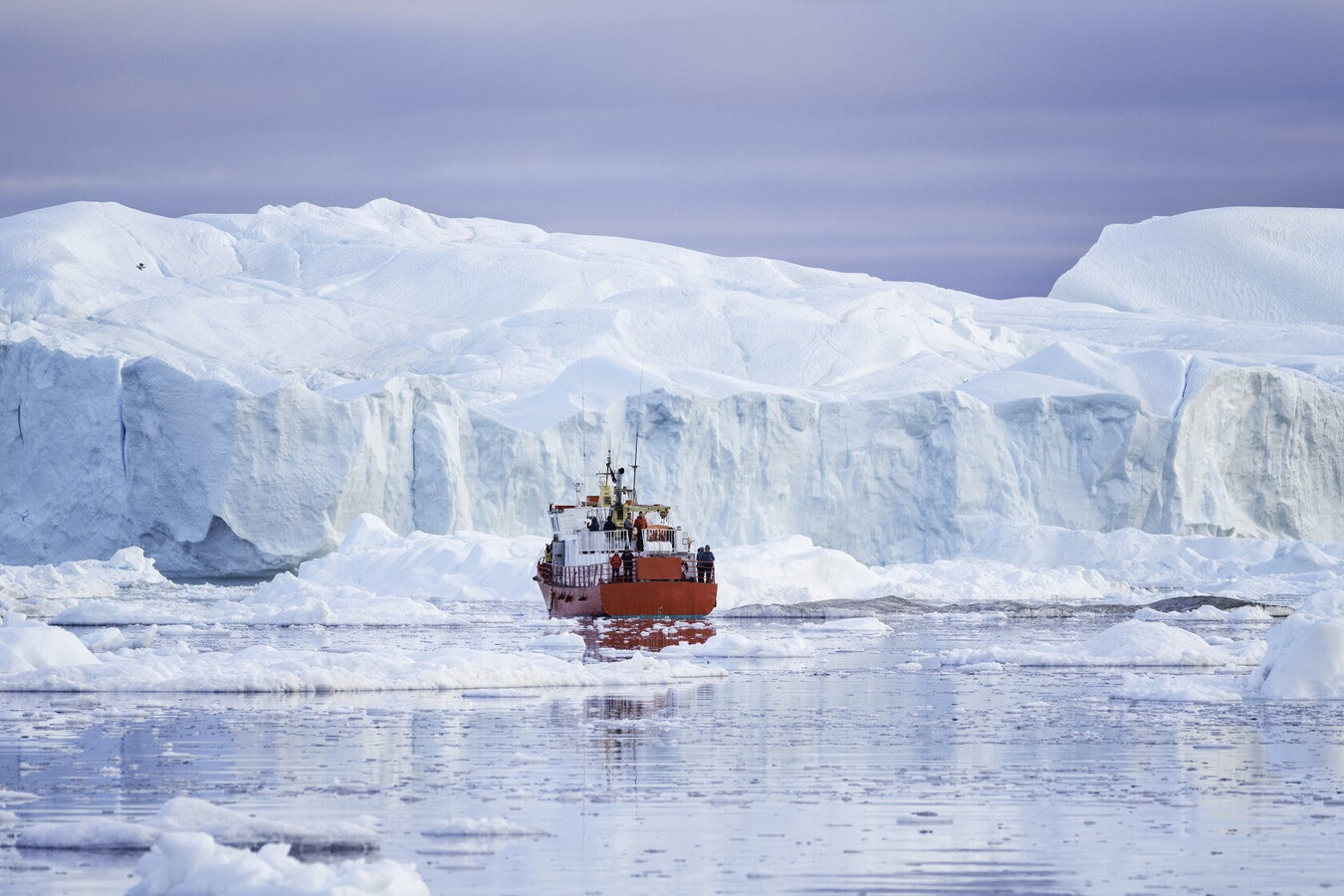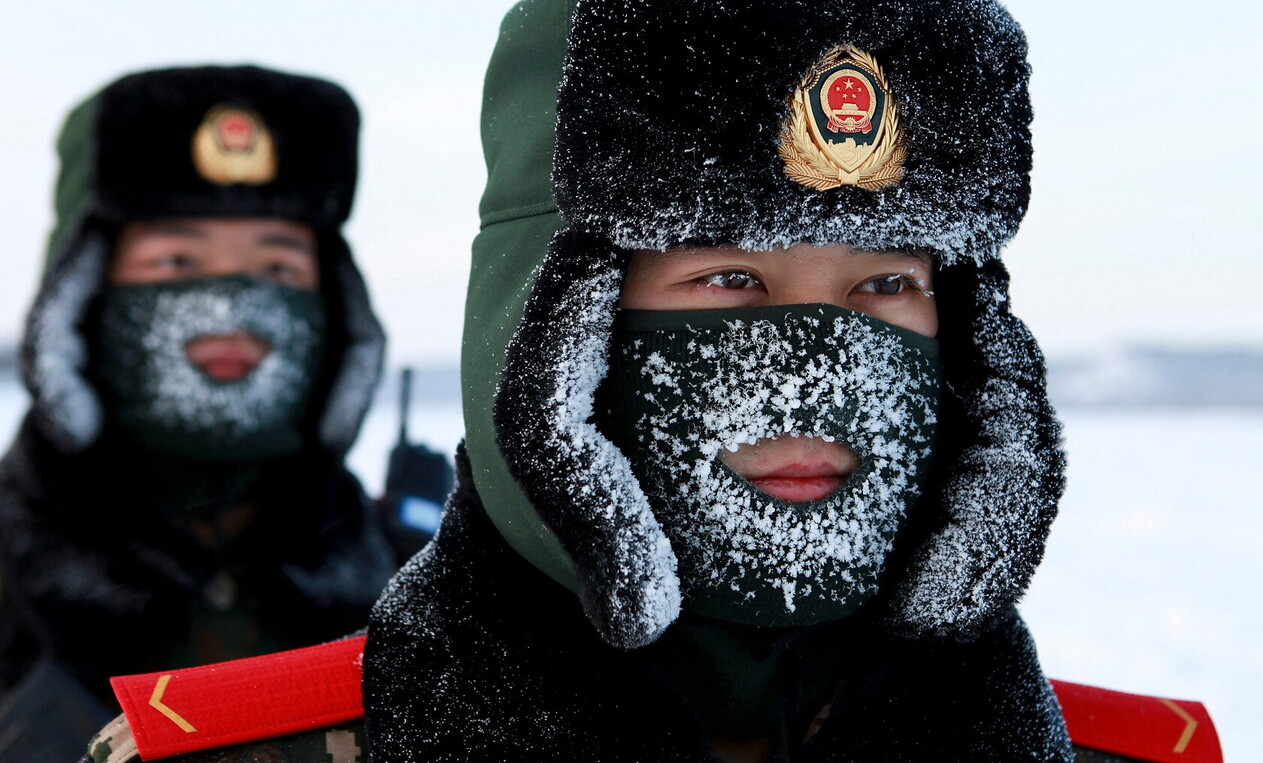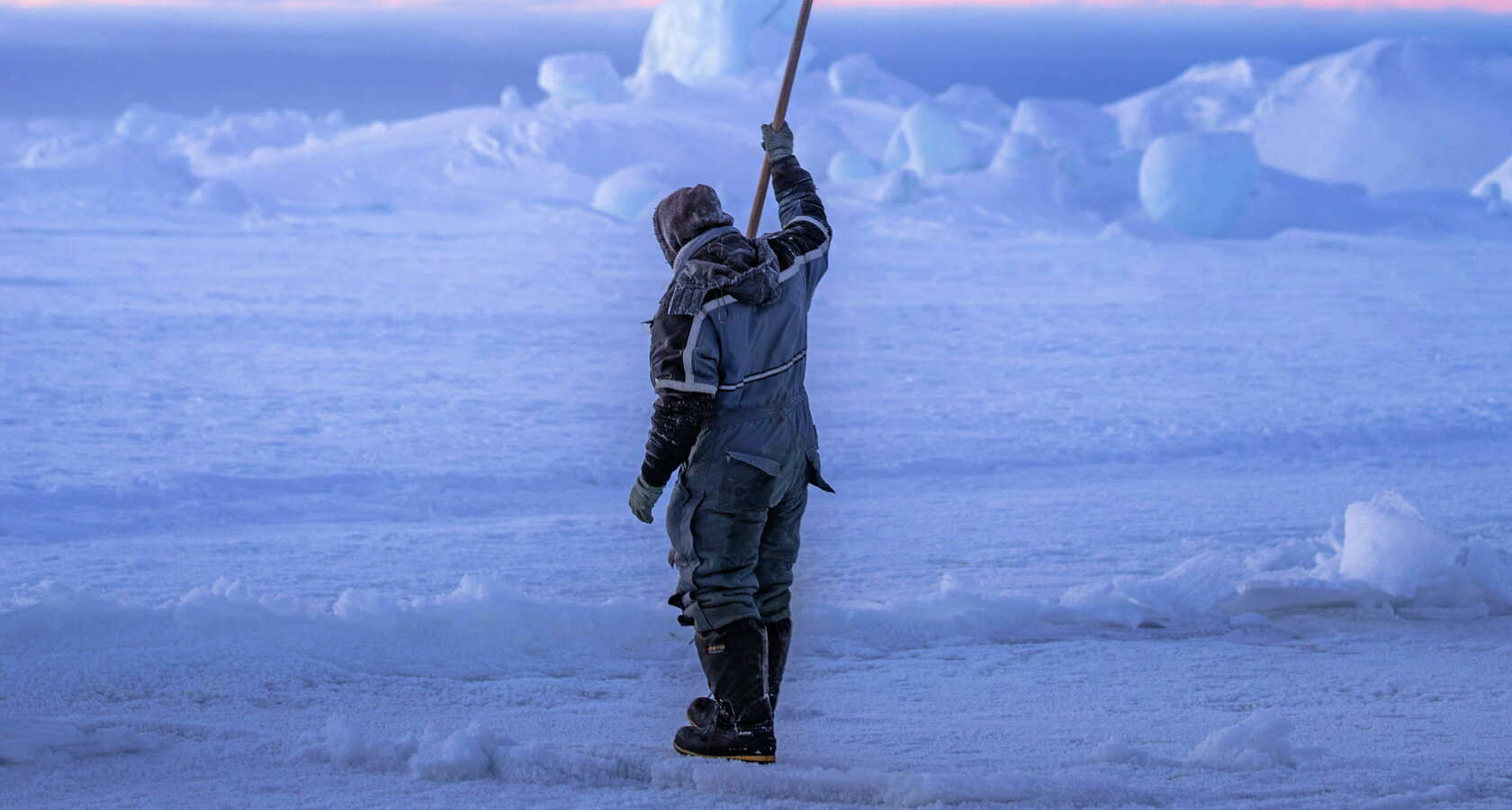
The Dragon's hegemony
China’s ambitions
China strengthens its presence in the Arctic with scientific missions, infrastructure investments and cooperation with Russia. With new trade routes and geopolitical strategies, China aims for a key role in the polar region
10 minA
few weeks before Donald Trump’s inauguration in January, Arctic affairs briefly returned to the headlines. While the incoming U.S. president had not yet commented on Greenland, speculation was already mounting—fueled not only by Washington’s shifting posture but also by growing interest from another major player in the polar region: China.
In late 2024, China launched the Tan Suo San Hao, a new deep-sea exploration vessel that marks a significant step in its expanding maritime ambitions. At 104 meters in length and displacing 10,000 tons, the ship is equipped with cutting-edge icebreaking capabilities, placing it at the forefront of China’s polar research fleet. According to Chinese media, Beijing now aims to become the second country after Russia to reach the Arctic seafloor—and plans to carry out the first manned mission to explore it. In 2007, Russia thrust the Arctic into the geopolitical spotlight by planting a titanium flag on the seabed beneath the North Pole, claiming the territory as terra nullius. The act was more than symbolic—it carried a blunt, unmistakable message. As with the Moon, this uncharted world had now been “conquered” and was being claimed. The gesture crystallized Russia’s ambitions and signaled a new era of competition over the Arctic’s vast and largely untapped potential.
The alliance with Russia
Much has changed since 2007—politically, economically, and environmentally. Following Russia’s invasion of Ukraine, the Arctic Council—the main international forum for managing regional polar issues—effectively suspended its work. The Council includes all eight Arctic states, along with numerous observer countries, including Italy. Norway, the current chair, has been working to restart activities, though with considerably less momentum than in previous years. In May, the chairmanship will pass to Denmark, which takes the helm during one of the most sensitive periods in recent memory—particularly given the increasingly complex situation surrounding Greenland. All elements are interconnected: a universal truth made even more evident in the Arctic, where science, politics, and economics form an especially intricate and tightly woven web.

While China certainly has no Arctic coastline, its economic and political ambitions increasingly extend into the region. The upcoming Arctic mission of the Tan Suo San Hao—built by the China State Shipbuilding Corporation—is just one facet of this push. The mission, expected to take place by the end of the year, is part of China’s growing maritime presence in the Arctic. In early October 2024, to mark the 75th anniversary of the founding of the People's Republic, several Chinese Coast Guard vessels entered the Arctic Ocean for the first time, conducting joint exercises with Russian counterparts. Just prior to these drills, Chinese diplomat Ma Xinmin met with Russia’s Nikolay Korchunov—former Arctic ambassador and current ambassador to Norway—to discuss the future of Arctic maritime routes, energy and infrastructure development, and scientific cooperation. The meeting followed a broader agreement signed three months earlier between Chinese Premier Li Qiang and Russian Prime Minister Mikhail Mishustin, focused on jointly developing Arctic sea routes.
A
t that meeting, both sides pledged to strengthen “mutually beneficial cooperation in the Arctic” and to launch a “practical dialogue” within a new subcommittee dedicated to managing the Northern Sea Route (NSR). Yet despite the diplomatic language, Russia and China do not fully align on Arctic governance. Until early 2022, experts believed that disagreements over the legal status of the Arctic—and especially the NSR—could be handled through rational dialogue. But since then, Russia has passed several new laws asserting tighter control over Arctic navigation, while China’s position has remained deliberately vague. Its official Arctic policy asserts that “China protects the interests of all countries and the international community”—a formulation that notably avoids endorsing Russia’s claims over its Arctic maritime boundaries.
Last summer, China deployed no fewer than three icebreakers to the Arctic, underscoring its growing capability to operate advanced, multipurpose vessels far from its own geographic sphere. The Arctic’s importance to China was even highlighted in a dedicated paragraph within its latest Five-Year Plan—a clear signal of long-term strategic interest. China’s Arctic activities have never openly challenged territorial claims or sparked direct conflict. Instead, they are framed as cooperative and inclusive—focused on scientific research, logistical support, and multilateral development. Yet beneath this language lies a clear ambition: to position China as a central player in the Arctic’s future.
A game of routes
In 2018, China declared itself a “near-Arctic state”—a bizarre yet revealing formulation. Although Chinese territory lies far from the Arctic Ocean, the logic behind the claim is strategic: commercial ships departing daily from Chinese ports may soon head north, rather than taking the traditional southern routes. The Northern Sea Route (NSR), which runs through the icy waters along Russia’s 24,000-kilometer Arctic coastline, offers a potential game-changer for global trade. Russia’s intentions here are unambiguous. Already dependent on Arctic hydrocarbon extraction for roughly 14 percent of its GDP, Russia sees the NSR as central to its economic and strategic future. A standard Panamax container ship could reach European ports via the NSR with a time savings of 10 to 12 days—though harsh weather and unpredictable ice conditions remain significant obstacles to regular, high-volume traffic.
Ambitions for the route were dampened following the wave of Western sanctions imposed on Russia over the past three years, which isolated the country from much of the global shipping industry. But China continues to bet heavily on the NSR as a way to diversify its trade routes and reduce reliance on chokepoints controlled by the U.S. and its allies—such as the Strait of Malacca and the Suez Canal. The Arctic has long figured into Russia’s strategic imagination as a natural extension of the Russkiy Mir, or Russian World. Its Arctic policy has set bold targets: 80 million tons of cargo by 2024 and more than 130 million tons by 2030. Meanwhile, the region’s changing climate—particularly the shrinking summer sea ice—could make parts of the Arctic navigable for longer periods. In the coming years, we may see ice-free months where there were once vast frozen expanses.
Global shipping is already preparing to exploit this emerging corridor. Last September, the NewNew Star, a Hong Kong-flagged container ship, became the largest non-ice-class vessel ever to navigate the Arctic. On September 4, it crossed the Bering Strait and entered the NSR. Weighing 35,975 gross tons and stretching 231 meters in length, the NewNew Star surpassed all previous container ships to traverse the route. Owned by the Yangpu NewNew Shipping Company, the firm had previously operated smaller ice-capable vessels between Chinese and Russian ports—but this voyage marked a leap in scale and ambition. But China’s ambitions in the Arctic extend well beyond a single, albeit strategic, shipping lane. In December 2024, Nuuk—the capital of Greenland—celebrated the opening of its new international airport, now capable of receiving direct commercial flights from around the world. While this may seem a modest achievement, it marks a significant milestone for Greenland’s economy, tourism sector, and political development. Two additional airports are expected to follow, reinforcing the island’s emerging connectivity.
This infrastructure project also reveals a deeper geopolitical story. Back in 2018, China offered to become a major financier of the new Nuuk airport. The proposal was welcomed by much of the local population, but it was swiftly blocked by Denmark and the United States—alarmed by what they saw as an overt attempt by Beijing to gain a foothold in the Arctic. The move made China’s intentions clear: it wanted not only to invest economically in the region, but also to shape its long-term development. At the Arctic Circle Assembly in Tórshavn, Faroe Islands, Gao Feng, China’s Special Representative for Arctic Affairs, underscored this point: “For us, it is simply an investment. China has no intention of creating problems. However, it is clear that we want to invest in the region—particularly in ports and infrastructure to grow tourism. China’s actions in the Arctic should be understood in the context of its Arctic strategy, released last January, and as part of the broader Belt and Road Initiative.” Seven years later, the political landscape has shifted dramatically. But one thing remains constant: China has no intention of ceding its place in the Arctic.

